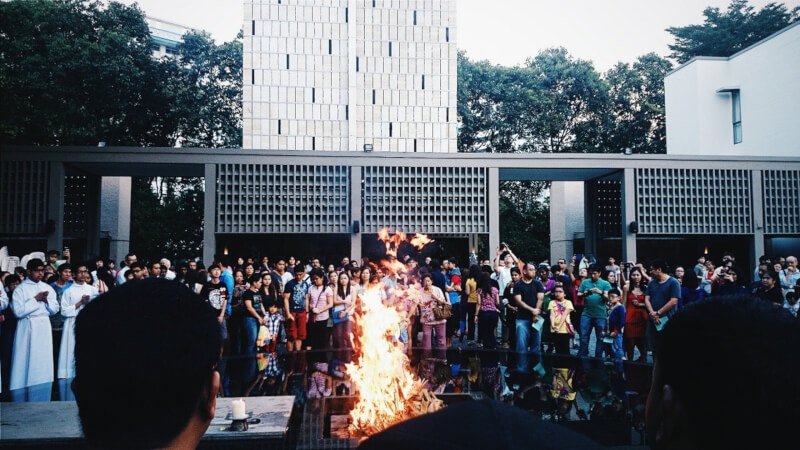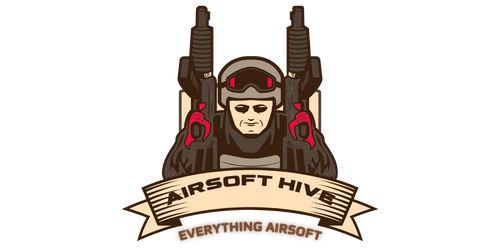Airsoft is a popular recreational activity that allows players to engage in mock combat using replica firearms. To ensure success on the field, it is crucial to understand how to effectively utilize support weapons and fire teams. In this article, we will guide you through the best ways to maximize the potential of support weapons and coordinate with your fire team, all while having a blast in the thrilling world of Airsoft. Whether you are a seasoned player or just starting out, these tips and strategies will help you dominate the field and achieve victory. So grab your gear, rally your team, and get ready for an action-packed adventure!

Choosing the Right Support Weapon
When it comes to choosing the right support weapon for your airsoft fire team, there are a few factors you need to consider. The first is the role of the support gunner. Are you going to be providing suppressing fire to keep the enemy’s heads down? Or are you going to be more focused on accuracy and precision?
Once you have identified your role, you can then select a support weapon that fits your play style. Some support guns are designed for sustained fire, while others are more suited for accurate single shots. Consider how you like to play and choose a weapon that matches your preferences.
Lastly, take into account the environment and game rules. If you are playing in a small, indoor field, a heavy machine gun may not be the best choice. On the other hand, if you are playing in a large, outdoor field with plenty of open space, a support weapon with longer range and a high rate of fire might be the way to go. Always make sure to follow the rules and regulations set by the field or event organizers.
Training and Coordination
To effectively utilize support weapons and fire teams in airsoft, it is crucial to develop clear communication and signals. This allows for effective coordination between team members, ensuring everyone is on the same page during intense scenarios. Practice using hand signals, radio communication, and verbal cues to convey important information while minimizing the risk of giving away your position.
Additionally, fire and movement drills are essential for support gunners and their fire teams. These drills involve coordinated movements while maintaining covering fire, allowing the team to advance or retreat effectively. By practicing these drills regularly, your team will become more synchronized and efficient in combat situations.
Lastly, it is essential to learn to work in harmony with your fire team. Establish trust and develop a strong bond with your teammates through regular training sessions and team-building exercises. This cohesion will enhance your overall effectiveness during airsoft games and ensure you can rely on each other when the pressure is on.

Fire Team Roles and Responsibilities
A fire team consists of several roles, each with its own unique responsibilities. The support gunner is the backbone of the team, providing heavy suppressive fire to pin down the enemy. The assistant gunner supports the primary gunner by assisting with ammunition and providing covering fire when needed. The riflemen are responsible for maneuvering and engaging the enemy, while the squad leader coordinates the team’s actions and makes critical decisions.
Each role is pivotal to the success of the fire team, and it is crucial to understand and fulfill your responsibilities to the best of your ability. Effective communication and coordination within the team are vital for executing strategies and achieving objectives.
Working as a Fire Team
When operating as a fire team, it is essential to establish a proper formation. This formation can vary depending on the situation, but staying close to your teammates while maintaining proper spacing allows for effective communication and quick response to threats.
Maintaining proper spacing and overlapping fields of fire is crucial for covering all angles and preventing the enemy from flanking your team. By working together and coordinating your fire, you can create a wall of suppressive fire that hinders the enemy’s movements and keeps them pinned down.
Utilizing suppressive fire is another key tactic for a fire team. The support gunner plays a vital role in this aspect, providing continuous fire to suppress the enemy and create opportunities for your team to maneuver or retreat. By effectively using suppressing fire, you can keep the enemy’s heads down and gain an advantage in the engagement.

Support Gunner Tactics
As a support gunner, finding a good firing position is crucial. Look for elevated vantage points, cover, and concealment that provide a clear line of sight to potential enemy positions. By positioning yourself strategically, you can effectively engage multiple targets while minimizing your own exposure.
Controlling and sustaining fire is essential for a support gunner. Be disciplined with your trigger control and fire in short bursts to conserve ammunition and maintain accuracy. However, when the situation calls for it, unleash a flurry of suppressing fire to keep the enemy at bay.
One of the primary responsibilities of a support gunner is suppressing enemy movement and reactions. By keeping the enemy pinned down, you limit their ability to effectively engage your team and create opportunities for your teammates to advance or retreat safely. Use continuous fire and burst fire to create a wall of suppressive fire that prevents the enemy from maneuvering.
Cover and Concealment
Utilizing natural and manmade obstacles is crucial for survival as a fire team. Use trees, walls, rocks, or any available cover to shield yourself and your teammates from enemy fire. Additionally, blend in with the surroundings by wearing camouflage or gear that matches the environment. This helps to break up your silhouette and makes it harder for the enemy to spot you.
Avoid silhouetting yourself on the battlefield. Silhouetting occurs when your outline is visible against the skyline or any bright background. This makes you an easy target for the enemy. Instead, stay low, use cover, and move tactically to maintain a low profile and minimize your risk of being spotted.
Flanking and Ambushing
Flanking and ambushing are effective tactics that can give your fire team a significant advantage. To execute these maneuvers successfully, communication and coordination are key. Use hand signals or verbal cues to communicate your movements and ensure your teammates are ready to support your actions.
Move stealthily and swiftly to attain advantageous positions. Use the element of surprise to catch the enemy off guard and force them into a reactive state. By securing your flanks and rear, you prevent the enemy from circling around and catching you off guard.
Reloading and Ammo Management
Carrying sufficient ammo for extended firefights is essential for a support gunner. You don’t want to run out of ammunition in the heat of battle. Take into account the duration of the game and plan accordingly. It is better to have extra magazines or belts of ammunition and not need them than to run out and be unable to provide suppressive fire when it is most needed.
Establish proper reloading procedures to ensure a smooth transition. Practice reloading drills with your teammates so that everyone knows their role and can provide cover while a team member reloads. Communicate with your teammates for resupply when needed, and ensure you have designated individuals responsible for distributing additional ammunition during breaks in the action.
Maintaining Situational Awareness
Maintaining situational awareness is crucial for the success of your fire team. Continuously scan and observe the battlefield, checking for enemy movements and positions. Communicate enemy positions and movements with your teammates, providing real-time updates that allow for better decision-making and coordination.
Be prepared to react to changes in the battlefield quickly. Adapt your tactics and strategies based on new information and remain flexible in your approach. A fire team that can swiftly adjust to changing circumstances has a higher chance of achieving their objectives.
Adapting to Different Mission Objectives
Different mission objectives require different approaches, and as a fire team, you must be adaptable. In defensive operations, focus on securing and holding your position, providing suppressing fire to deter the enemy’s advance.
In offensive operations, be aggressive in your movements and attack with coordinated fire and movement. Take advantage of cover and flanking opportunities to gain the upper hand.
During patrolling and reconnaissance missions, focus on stealth and observation. Gather intelligence, report enemy movements, and be ready to react quickly if engaged.
When holding and securing positions, establish a strong defense with overlapping fields of fire. Coordinate with other fire teams or squads to create a cohesive defensive line.
By understanding and adapting to different mission objectives, you can maximize the effectiveness of your fire team and increase your chances of success in airsoft games.
In conclusion, utilizing support weapons and fire teams effectively in airsoft requires careful consideration of the chosen weapon, thorough training and coordination, understanding of each team member’s role, and the ability to work together as a cohesive unit. By following these guidelines and developing the necessary skills, you can enhance your performance on the field and contribute to the overall success of your fire team. Remember to adapt to different mission objectives and maintain situational awareness to ensure victory in airsoft battles.


